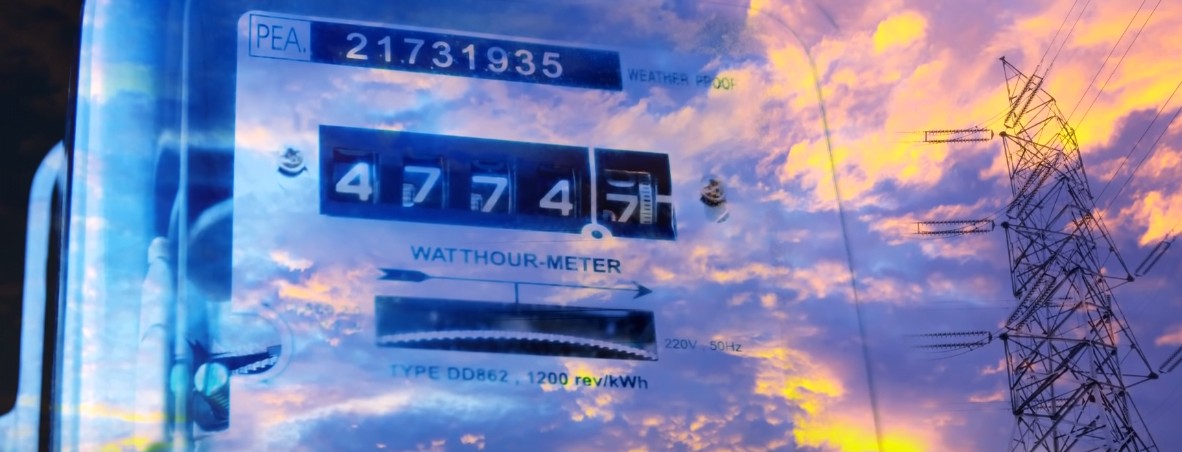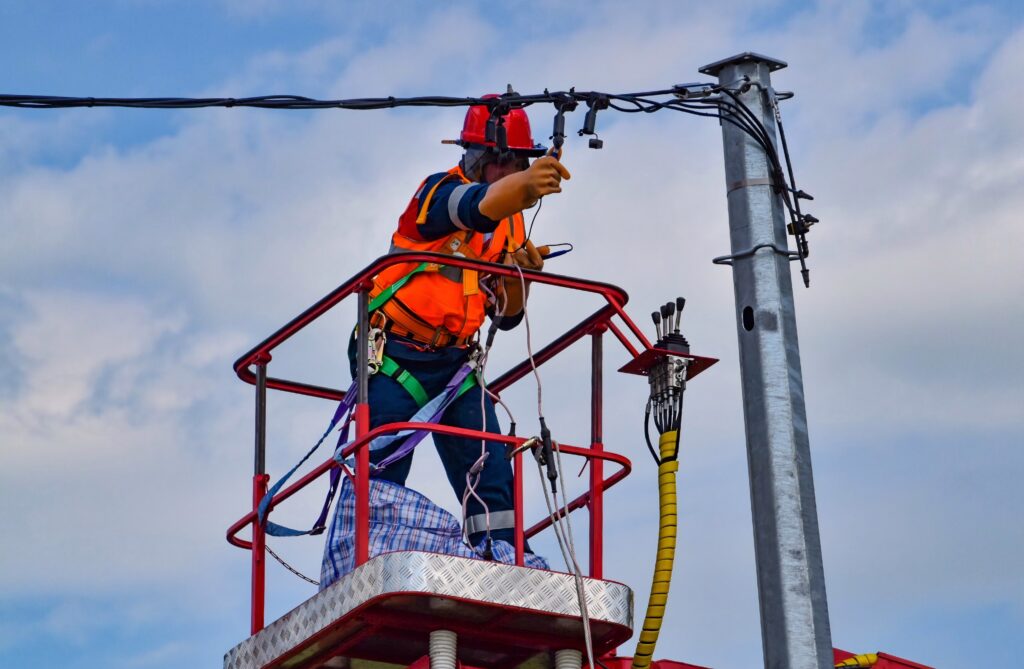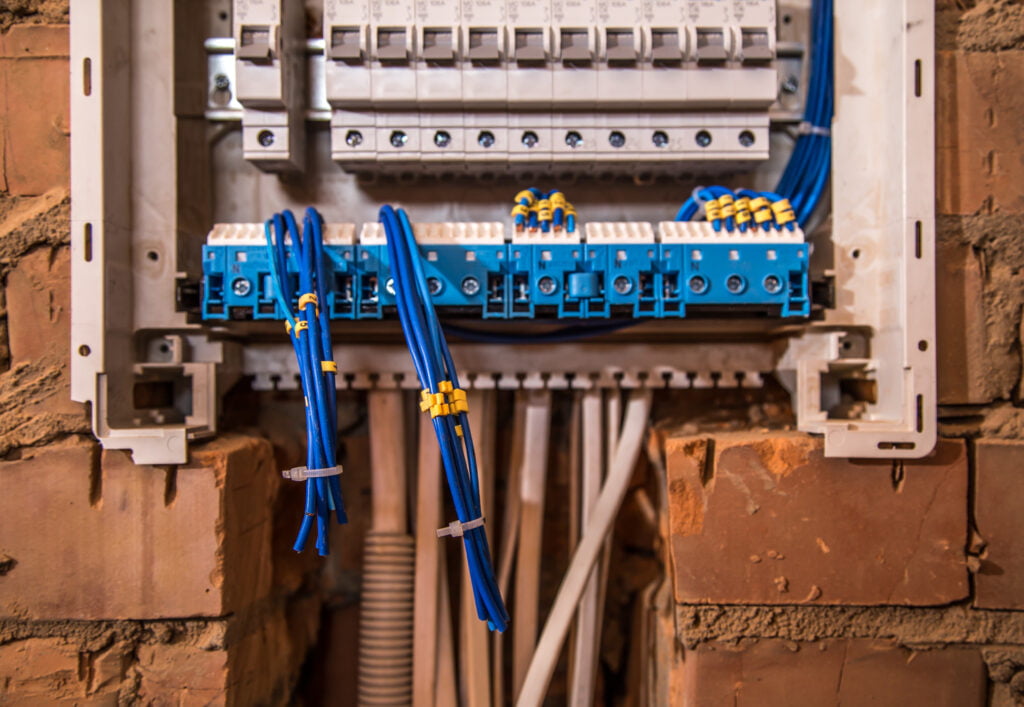Every home and business uses electricity as part of a daily routine. It’s something most of us take for granted. It powers lights, computers, appliances, and allows us to cook. This little-understood force is what drives the modern world. But where does it come from?
In this article, we’ll explore how power is made and how it runs through the power lines until it reaches your house. We’ll discuss the different sources of energy that power homes, and how the energy is converted from one form into another until it’s delivered to you.
Table of Contents
Electricity Generation
Electricity is created in power plants that convert other types of energy into the power that we use in our homes. This power is created from fossil fuels, natural gas, nuclear energy, coal, or other sources of renewable energy such as solar, hydroelectric, and wind power.
Energy sources can be classified in 2 ways:
- Renewable sources: these are sources of power that can be continually replenished and be used without affecting future availability. They include hydroelectric, wind, and solar energy.
- Non-renewable sources: these sources of power are finite and excess consumption may limit their future availability. These include fossil fuels, nuclear energy, coal, natural gas, and oil.
The term “renewable energy” is frequently used to describe clean energy, but it is not always the case. Biomass energy is considered renewable because it’s a type of power that uses organic waste, which is very abundant, but it produces carbon emissions during the conversion process through combustion, so although it is a renewable energy source, it is not clean.
Power plants then consume their chosen source of fuels, which are used to power turbines that turn and create kinetic energy (by motion). it then turns into an electrical current through a generator with a magnetic field and creates the final product, which is voltage.
Once voltage (electricity) enters the system, it travels to the transmission substation, which amplifies the voltage to even higher levels (over 100,000 volts!), and makes it feasible for the electricity to travel a long way through the lines, all the way to your home.
Transmission Lines and Poles
Electricity makes its way from the power plant to your home via transmission lines. These lines link power plants to substations, where the electricity is redirected and distributed to transformers which step down the voltage at switching substations for safety and then distributed through lower voltage neighborhood distribution lines. Before electricity can enter your home, it is stepped down again to match the voltage that your home is expecting to receive.
Your Electrical Meter
Electricity is finally delivered to your home from the transformer through a wire that’s hooked up to your house, this is called a service drop. Before the electricity reaches your home, however, a meter measures the amount of electricity that has entered your home and sends this information back to your electric utility company. The meter is mounted on a wall near where the service drop meets the house. The meter tells you how much electricity you are using throughout the billing cycle, which usually lasts from 25 to 60 days depending on where you live in the country.
Electricity Running in Your House – Finally
From the meter box, the electricity is carried through your house, up through the walls of your electrical circuits. What you see are the wires that are part of your house’s electrical system. The electricity eventually reaches its destination, which is an electrical outlet in the wall or doorway. It then makes its way back through the wire to a light switch or appliance and “brings” life to that appliance. So there you have it; everything you use in your home is powered by electricity.
What is the Difference Between a Generator and a Transformer?
To produce electricity, a generator needs to be turned and the movement produced creates an electric current. A transformer switches (or steps down) the voltage of the electricity and makes it safer to transmit over long distances.
In other words, generators are responsible for producing voltage in a power plant, and transformers are responsible for reducing voltage. Transformers can be found at substations or in your neighborhood, but they are rarely found in homes because their main responsibility is to match high voltages with lower ones for safe transmission.
How does a Transformer Work?
A transformer is a device that turns voltage from high to low. It works by using an electromagnet to transfer the electric current through the wires, which changes its voltage. Transformers can be found at substations or in your neighborhood, but they are rarely found in homes because their main responsibility is to match high voltages with lower ones for safe transmission.
Since transformers operate at high-voltage levels, there must be safety mechanisms in place near neighborhoods and residential areas; this is where switches and protective devices come into play.
The Electricity Market in Texas
Texas is one of the leading states in terms of energy usage and production, and the state’s population is on track to double by 2050 according to the Texas Tribune. Texas has a lot of natural resources, including fossil fuels, wind power, and solar power.
Traditionally, power plants and grids have been owned by a single company. Before deregulation was introduced in Texas, utility companies were responsible for the distribution, generation, and retailing of electricity. This created conflict of interest and energy deregulation laws forced these utility companies to split into separate businesses. Today, there are different entities involved in the energy market:
- Power generation companies
- TDUs – Transmission and Distribution Utilities
- REPs – Retail Energy Providers
You purchase electricity from a Retail Energy Provider, which in turn, trades electricity from power generation companies in an open market. The TDUs add a small fee to cover the costs of maintaining the wires and the poles that are essential to delivering the electricity across the state. Thanks to how the Texas power sector is structured, there are many electricity providers to choose from.
States normally have two ways to reduce energy costs, by implementing energy efficiency measures and on-site generation. In the Great State of Texas, you have another option, you also have the power to choose your own electricity provider and find a plan that fits your monthly usage.
Power To Choose – But Smarter and Better
Texas power retailers offer a variety of plans for customers to choose from. Each plan has its own unique features and drawbacks. The only way to ensure you’re not overpaying is to shop around.
However, comparing the prices of hundreds of different plans is a long tedious mission. At SlashPlan.com, you can choose between many electricity retailers and plans. Based on your usage we compare all the different options and present you with the best offer. Enrollment can be done online in minutes and can also schedule service to start at a later date.
What used to take hours and days now only takes minutes, and we offer it all for free.
Simply enter your zip code below and find the best electricity rate in your area.
Enter zip code
View all the electric plans that are available in your area
Compare plans
Not all plans are equal. Use our calculator to find the plan that best fits your needs
Sign up & Save
Enrollment takes about 5 minutes and can save you $50+ on average every month


